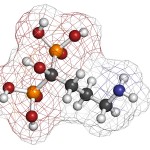
Bisphosphonates have been used to treat a wide range of bone diseases including osteoporosis and the complications of metastatic bone disease. Bisphosphonates are however associated with a serious adverse event, osteonecrosis of the mandibular and maxillary bones. In this condition the bone becomes friable, non viable and eventually exposed. Bisphosphonate-related osteonecrosis of the jaw (BRONJ) was first reported in 2003 and intravenous bisphosphonates are considered to pose a greater risk than oral administration. Reported incidence rates range from 0.028% to 18.6% although the true incidence is unknown.
A range of treatment approaches have been used to manage BRONJ and the aim of this review was to determine the efficacy and safety of any intervention aimed at treating BRONJ.
Methods
Searches were conducted in the Cochrane Oral Health Group Trials Register, Cochrane Breast Cancer Group Trials Register, the Cochrane Central Register of Controlled Trials (CENTRAL), Medline, Embase, CancerLit, CINHAL,AHMED, the Database of Randomised Controlled Trials in Hyperbaric Medicine, US National Institutes of Health Trials Register, The World Health Organization International Clinical Trials Registry Platform, the Grey Literature Report in Public Health of The New York Academy of Medicine, GreyNet International, the Grey Literature for Dentistry, Grey Literature in the Health Sciences, Open Grey and National Technical Information Service databases. Experts in the field were also contacted.
Randomised controlled trials (RCTs) comparing the effects of any treatment for BRONJ with another treatment or placebo were considered. Two reviewers independently selected studies, abstracted data and assessed study quality using the Cochrane risk of bias tool.
Results
- One small trial involving 49 patients was included
- Standard care (defined as surgery, antibiotics and oral rinses at the discretion of the oral-maxillofacial surgeon) was compared to standard care plus hyperbaric oxygen therapy (2 atmospheres twice a day for 40 treatments
- At 3 months, patients in intervention group were more likely to have an improvement in their osteonecrosis than the standard care group participants (risk ratio (RR) 1.94, (95% CI;1.01 to 3.74).
- There was no clear difference between the groups for the outcome ’healed’ at three months (RR 3.60, 95% CI 0.87 to 14.82).
- There was no clear difference between the groups for improvement or healing when they were evaluated at six, 12 and 18 months and last contact.
- The study did not give any information on adverse events.
- The quality of the evidence is very low since the only study was underpowered and was at high risk of bias due to lack of blinding, cross-over of participants between groups and very high attrition (50% at 12 months and 80% at 18 months in this study, which was designed for an intended follow-up of 24 months).
Conclusions
There is a lack of evidence from randomised controlled trials to guide treatment of bisphosphonate-related osteonecrosis of the jaw (BRONJ). One small trial at high risk of bias evaluated hyperbaric oxygen therapy (HBO) as an adjunct to “standard” care and could not confirm or refute the effectiveness of HBO. There are two ongoing trials of teriparatide treatment for BRONJ. We found no randomised controlled trials of any other BRONJ treatments. High quality randomised controlled trials are needed. We provide recommendations for their focus and design.
Comments
A very extensive search was undertaken for this review and while a larger number of records were originally screened (3224) with a smaller number having a full text assessment (403) only one small trial ( Dental Elf 16th July – 2012) and the two ongoing studies noted above were identified. The authors highlight an number of other review of this topic area all of which include research designs other than randomised trials. All of the reviews highlight the controversial nature of the management options for BRONJ. What is clear though is that the conduct and reporting of research in this area needs to be improved. Many centres offer multi-modal treatments, which complicates matters although the authors do identify 3 broad categories of intervention that should be investigated, classical conservative wound healing management, surgery and “add-on” adjuvant treatments. The authors also provide some very useful suggestions for improving the conduct of research into this condition.
Links
Primary paper
Rollason V, Laverrière A, MacDonald LC, Walsh T, Tramèr MR, Vogt-Ferrier NB. Interventions for treating bisphosphonate-related osteonecrosis of the jaw (BRONJ). Cochrane Database Syst Rev. 2016 Feb 26;2:CD008455.
Other references
Dental Elf – 17th Nov 2015 – Medication related osteonecrosis of the jaw
Dental Elf – 4th May 2015 – Bisphosphonate-related osteonecrosis of the jaw treatments

Bisphosphonate-related osteonecrosis of the jaw treatments https://t.co/dpzmQ8HlXq
Bisphosphonate-related osteonecrosis of the jaw treatments– little evidence available https://t.co/dpzmQ8HlXq
Lack of evidence from trials to guide treatment of bisphosphonate-related osteonecrosis of the jaw https://t.co/dpzmQ8HlXq
Little RCT evidence to guide treatment of bisphosphonate-related osteonecrosis of the jaw https://t.co/dpzmQ8HlXq
Bisphosphonate-related osteonecrosis of the jaw has little RCT evidence to guide treatment https://t.co/dpzmQ8HlXq
Don’t miss- Bisphosphonate-related osteonecrosis of the jaw treatments– little evidence available https://t.co/dpzmQ8HlXq